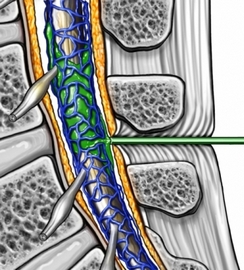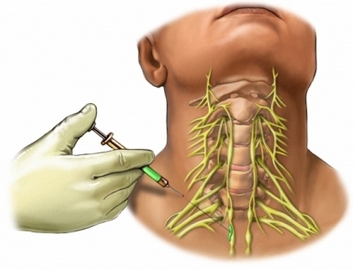Regional anesthesia – Nerve block
Description of regional anesthesia
Regional anesthesia is a type of anesthesia. It blocks pain in the surgery area, without immersing the patient to sleep.
The reasons for using the regional anesthesia
Regional anesthesia is used for pain relief in many cases,:
- It can be used in patients at high risk for complications from general anesthesia. Regional anesthesia is safer, than general anesthesia;
- It has been proved, that regional anesthesia is preferred for the treatment of injuries, minor surgery, pain in certain parts of the body;
- Epidural anesthesia is often used during childbirth, to facilitate the fight;
- Regional anesthesia helps recovery after surgery, It reduces the duration of pain.

Possible complications of regional anesthesia
Complications are rare, but the procedure does not guarantee the absence of risk. If you plan to regional anesthesia, you need to know about possible complications, which may include:
- Pain and tenderness around the injection site;
- Edema, bleeding or infection from the injection site;
- Headache;
- Lowering blood pressure;
- Nerve Damage;
- Analgesic mistakenly injected into a vein or artery;
- Damage to organs.
Some factors, that may increase the risk of complications:
- Current or past health problems;
- Medication, food additives, herbal remedies, or blood thinners;
- Allergy;
- Smoking;
- Alcohol consumption;
- The use of some drugs;
- Adverse reaction to anesthesia in the past.
How does regional anesthesia?
Preparation for the procedure
The doctor appointed the following:
- Medical checkup;
- The meeting with the anesthesiologist, which examined the medical history and will examine;
In the run-up procedure:
- Do not eat at night, if recommended by your doctor;
- Take your medicines, prescription;
- Give up some of the current drugs, if recommended by your doctor;
- We need to organize a trip for the operation and back home from the hospital. Also organizes home care during the recovery period.
Procedure regional anesthesia
With regional anesthesia, you can stay awake. Together with anesthetic, usually, given a sedative. Before anesthesia:
- The doctor can install sensors, to monitor vital functions;
- The injection site will be treated with an antiseptic solution;
- Before applying regional, Local anesthesia may be used, to numb the area of the needle.
The anesthesiologist will introduce the drug near the cluster of nerves. Choose those nerves, in which signals are transmitted from the surgical site.
Types of regional anesthesia include epidural and spinal anesteziyu. Both methods involve administering medication in or near the spinal canal.
Another type of anesthesia, suggests injection in peripheral nerves, and is often used for the introduction of the knee, shoulder, hand prior to surgery. The anesthesia is injected near clusters of nerves, coming from the hands or feet. Blocking of the cervical nerve is a type of peripheral anesthesia for surgery on the neck or arm.

After the procedure, regional anesthesia
If you are using a local anesthetic, sensations begin to appear within a few hours after the anesthetic. In the treatment of severe pain, some pain appear in a few hours, and healing may take up to two weeks.
How long will the regional anesthesia?
Introduction of regional anesthetic takes several minutes or longer, anesthetic effect lasts for 2-6 hours.
Will it hurt when applying regional anesthesia?
Depending on, used sedation or local anesthesia, You may feel some pain or tingling at the injection site. The anesthetic relieves pain during surgery. You can feel, that your limb may be heavy, but after the end of the anesthetic everything returns to normal.
Postoperative care
Post-operative care will depend on the nature of the transaction. Probably, you will receive instructions on restrictions in diet and physical activity.
After the expiry of anesthesia, in the field of back pain relievers sensation. Maybe, you'll have to time to limit some activities, such as driving a car, since you may feel numb or drowsy from the anesthetic and sedative used .
Contact your doctor after regional anesthesia
After returning home, you need to see a doctor, If the following symptoms:
- Signs of infection, including fever and chills;
- Redness, edema, severe pain or discharge from the injection site;
- Pricking, numbness, or trouble moving the site, in which the anesthetic was administered, for longer time, than expected;
- Pain, which does not pass after taking pain medication appointed;
- Headache;
- Persistent cough;
- Shortness of breath or chest pain;
- Dizziness;
- Irregular heartbeat;
- Loss of taste or numbness of the mouth;
- Other worrisome symptoms.
